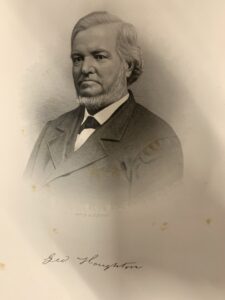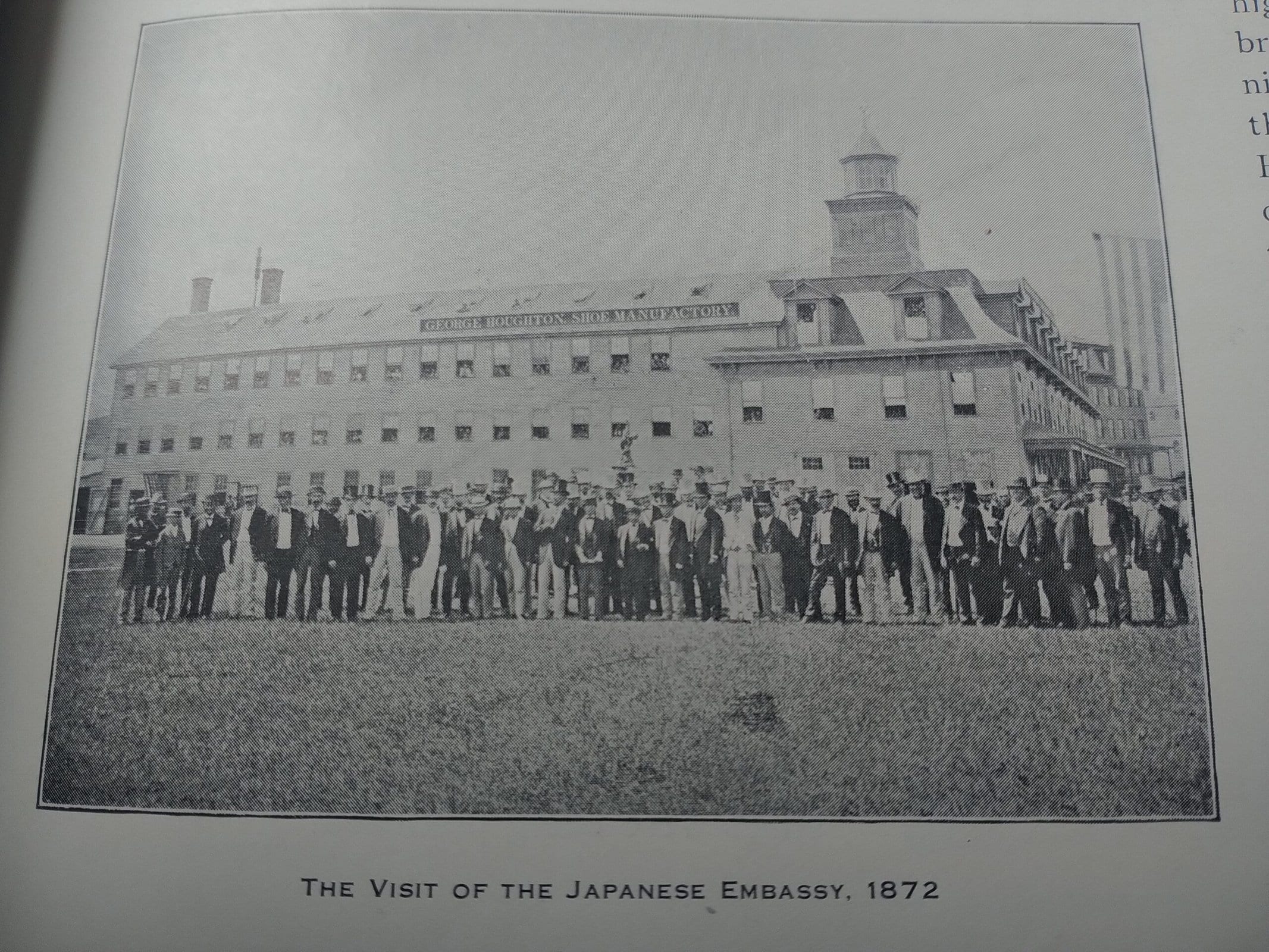
HUDSON – Why does Hudson have two roads named Houghton? Here is the story of George Houghton.
Born of Quaker ancestry in Canada in 1822, Houghton was apprenticed to a shoemaker at age eight. In his early years, he worked in Francis Brigham’s Hudson factory. But Houghton was a man of indomitable willpower, and evenings found him making shoes in his home.
His first factory was a large three-story building on the east corner of Main and High Streets. Needing more floor space, he purchased a vacant railroad building on Main Street at Houghton Court. He then moved his factory and attached it to the rear.
By 1872, his 335 employees produced over 3,000 shoes per day. He also built a leather tannery, which employed fifty-five men. His was one of the largest shoe factories in the country.
At business meetings in Boston men would exclaim, “Look, it’s Houghton, of Hudson!” Wishing to learn from the best, the Japanese Embassy visited.
Known as “Boss” Houghton, he was a generous, public-spirited man who paid the highest wages in the industry. He built a park on Main Street west of Broad, placed a large fountain in the center, and planted a row of trees where the sidewalk is today.

The number of his private charities is legion. Houghton financially aided every religious group and was a founder of the Unitarian Church. He was largely responsible for building the High Street School, and he funded a private school in his building and paid the teachers’ salaries. He was a substantial backer of our fire department.
The great Boston fire of 1872 destroyed his shoe inventory, and in 1873 a worldwide depression took hold. While others were laying off, Houghton kept his men employed. By 1875 he was bankrupt.
As he had in his youth, Houghton now worked for other men. He died in 1896.
A massive fire destroyed the Houghton factory in 1904. His home was torn down in the late 1950s, to make room for Hudson Catholic High School.
Traces of Houghton’s life remain. An ornamental window glass from his home is in the Hudson Historical Society museum, as is the eagle from the factory’s weathervane. And the apartment building on Broad and Winter Streets was originally a wing of his factory.
Let’s all remember George Houghton, one of Hudson’s finest men!











